 W
WSlavery in the United States was the legal institution of human chattel enslavement, primarily of Africans and African Americans, that existed in the United States of America from its founding in 1776 until passage of the Thirteenth Amendment in 1865. Slavery was established throughout European colonization in the Americas. From early colonial days, it was practiced in Britain's colonies, including the Thirteen Colonies which formed the United States. Under the law, an enslaved person was treated as property and could be bought, sold, or given away. Slavery lasted in about half of U.S. states until 1865. As an economic system, slavery was largely replaced by sharecropping and convict leasing.
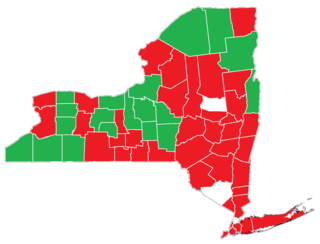 W
WA referendum on black suffrage was held in New York in 1860. Voters were asked whether universal suffrage for black men 21 years of age and older should be introduced. At the time, black voters were required to meet certain property-owning criteria. Black men who owned the required amount of property could still vote in the state, and many did vote in the referendum.
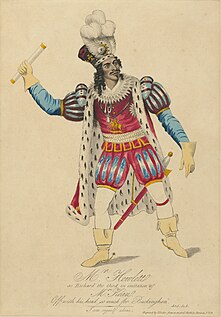 W
WThe African Grove Theatre was a theatre founded and operated by William Alexander Brown, a free black man in New York City in 1821, who was from the West Indies.
 W
WThe history of African-American settlement in Africa extends to the beginnings of ex-slave repatriation to Africa from European colonies in the Americas.
 W
W"Ain't I a Woman?" is a speech, delivered extemporaneously, by Sojourner Truth (1797–1883), born into slavery in New York State. Some time after gaining her freedom in 1827, she became a well known anti-slavery speaker. Her speech was delivered at the Women's Convention in Akron, Ohio, on May 29, 1851, and did not originally have a title.
 W
WThe Society for the Colonization of Free People of Color of America, commonly known as the American Colonization Society (ACS), was founded in 1816 by Robert Finley, to encourage and support the migration of free African Americans to the continent of Africa.
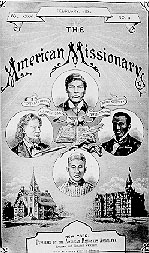 W
WThe American Missionary Association (AMA) was a Protestant-based abolitionist group founded on September 3, 1846, in Albany, New York. The main purpose of the organization was abolition of slavery, education of African Americans, promotion of racial equality, and spreading Christian values. Its members and leaders were of both races; The Association was chiefly sponsored by the Congregationalist churches in New England. Starting in 1861, it opened camps in the South for former slaves. It played a major role during the Reconstruction Era in promoting education for blacks in the South by establishing numerous schools and colleges, as well as paying for teachers.
 W
WBirchtown is a community and National Historic Site in the Canadian province of Nova Scotia, located near Shelburne in the Municipal District of Shelburne County. Founded in 1783, the village was the largest settlement of Black Loyalists and indeed, the largest free settlement of ethnic Africans in North America in the eighteenth century. Birchtown was named after British Brigadier General Samuel Birch, an official who helped lead the evacuation of Black Loyalists from New York.
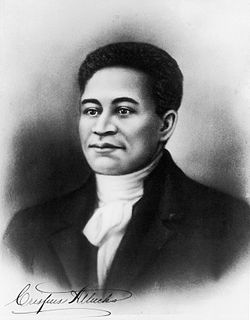 W
WA Black Patriot was an African American who sided with the colonists who opposed British rule during the American Revolutionary War. The term Black Patriots includes, but is not limited to, the 5000 or more African Americans who fought in the Continental Army during the war.
 W
WClotel; or, The President's Daughter: A Narrative of Slave Life in the United States is an 1853 novel by United States author and playwright William Wells Brown about Clotel and her sister, fictional slave daughters of Thomas Jefferson. Brown, who escaped from slavery in 1834 at the age of 20, published the book in London. He was staying after a lecture tour to evade possible recapture due to the 1850 Fugitive Slave Act. Set in the early nineteenth century, it is considered the first novel published by an African American and is set in the United States. Three additional versions were published through 1867.
 W
WThe history of the colonial period of South Carolina focuses on the English colonization that created one of the original Thirteen Colonies. Major settlement began after 1651 as the northern half of the British colony of Carolina attracted frontiersmen from Pennsylvania and Virginia, while the southern parts were populated by wealthy English people who set up large plantations dependent on slave labor, for the cultivation of cotton, rice, and indigo.
 W
WIn United States history, a free Negro or free black was the legal status, in the geographic area of the United States, of African Americans who were not slaves. It included both freed slaves (freedmen) and those who had been born free.
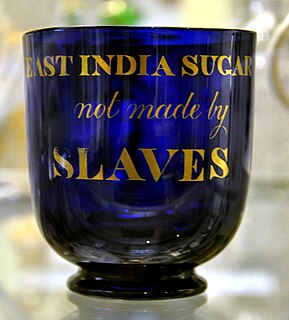 W
WThe free-produce movement was an international boycott of goods produced by slave labor. It was used by the abolitionist movement as a non-violent way for individuals, including the disenfranchised, to fight slavery.
 W
WProspect Bluff Historic Sites is located in Franklin County, Florida, on the Apalachicola River, 6 miles (9.7 km) SW of Sumatra, Florida. The site contains the ruins of two forts – the earlier "Negro Fort", which was constructed by the British in 1814. The British allowed fugitive slaves and Creek tribesmen that had taken refuge with them to occupy it after they evacuated Florida, but the fort was destroyed in an attack from U.S. forces in 1816 including a barrage of cannonballs from gunboats. Fort Gadsden was built in 1818 within the former walls of Negro Fort. The site has been known by several other names at various times, including Prospect Bluff, British post, Nicholls' Fort, Blount's Fort, Fort Blount, African Fort, and Fort Apalachicola.
 W
WWilliam and Mary Hosmer House is a historic home located at Auburn in Cayuga County, New York. It is a two-story, three bay, side hall frame house in a vernacular Greek Revival style. It is believed to have been built in the 1840s and enlarged sometime after the conclusion of the Civil War. The house was owned by anti-slavery editor and author William Hosmer.
 W
WIgbo Landing is a historic site at Dunbar Creek on St. Simons Island, Glynn County, Georgia. It was the setting of a mass suicide in 1803 by captive Igbo people who had taken control of their slave ship and refused to submit to slavery in the United States. The event's moral value as a story of resistance towards slavery has symbolic importance in African American folklore and literary history.
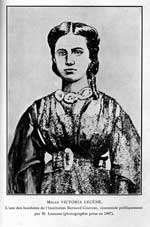 W
WThe Institute Catholique, also known as Ecole Des Orphelins Indigents, and the Couvent School, was a school founded in the Faubourg Marigny district of New Orleans in 1840 dedicated to providing a free education to African-American orphans. It was the first school in the United States to offer a free education to African-American children. It also served the non-orphan children of free people of color, who paid a modest tuition. It operated as a distinct entity until 1915.
 W
WThe Nathan and Mary (Polly) Johnson properties are a National Historic Landmark at 17–19 and 21 Seventh Street in New Bedford, Massachusetts. Originally two structures, one dating to the 1820s and an 1857 house joined with the older one shortly after construction. They have since been restored and now house the New Bedford Historical Society. The two properties are significant for their association with leading members of the abolitionist movement in Massachusetts, and as the only surviving residence in New Bedford of Frederick Douglass. Nathan and Polly Johnson were free African-Americans who are known to have sheltered escaped slaves using the Underground Railroad from 1822 on. Both were also successful in local business; Nathan as a [caterer] and Polly as a confectioner.
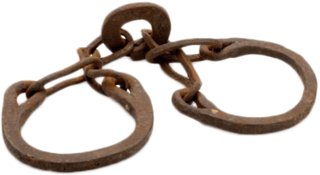 W
WThe William Lynch speech is an address purportedly delivered by a certain William Lynch to an audience on the bank of the James River in Virginia in 1712 regarding control of slaves within the colony. The letter purports to be a verbatim account of a short speech given by a slave owner, in which he tells other slave masters that he has discovered the "secret" to controlling black slaves by setting them against one another. The document has been in print since at least 1970, but first gained widespread notice in the 1990s, when it appeared on the Internet. Since then, it has often been promoted as an authentic account of slavery during the 18th century, though its inaccuracies and anachronisms have led historians to conclude that it is a hoax.
 W
WMaroons are descendants of Africans in the Americas who formed settlements away from slavery. They often mixed with indigenous peoples, eventually evolving into separate creole cultures such as the Garifuna and the Mascogos.
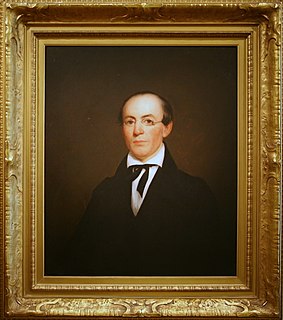 W
WThe Massachusetts Anti-Slavery Society, headquartered in Boston, was organized as an auxiliary of the American Anti-Slavery Society in 1835. Its roots were in the New England Anti-Slavery Society, organized by William Lloyd Garrison, editor of The Liberator, in 1831, after the defeat of a proposal for a college for blacks in New Haven.
 W
WThe Massachusetts General Colored Association was organized in Boston in 1826 to combat slavery and racism. The Association was an early supporter of William Lloyd Garrison. Its influence spread locally and was realized within New England when they joined the New England Anti-Slavery Society in 1833.
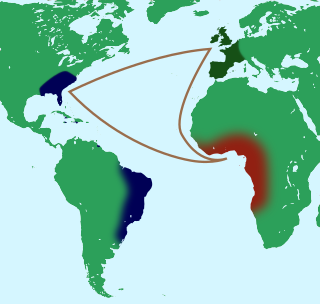 W
WThe Middle Passage was the stage of the triangular trade in which millions of Africans were forcibly transported to the New World as part of the Atlantic slave trade. Ships departed Europe for African markets with manufactured goods, which were traded for purchased or kidnapped Africans, who were transported across the Atlantic as slaves; the enslaved Africans were then sold or traded for raw materials, which would be transported back to Europe to complete the voyage. The First Passage was the transportation of captives (slaves) to the African ports, such as Elmina, where they would be loaded onto ships. The Final Passage was the journey from the port of disembarkation, such as Charleston, to the plantation or other destination where they would be put to work. The Middle Passage across the Atlantic joined these two. Voyages on the Middle Passage were large financial undertakings, generally organized by companies or groups of investors rather than individuals.
 W
WMississippi-in-Africa was a colony on the Pepper Coast founded in the 1830s by the Mississippi Colonization Society of the United States and settled by American free people of color, many of them former slaves. In the late 1840s, some 300 former slaves from Prospect Hill Plantation and other Isaac Ross properties in Jefferson County, Mississippi, were the largest single group of emigrants to the new colony. Ross had freed the slaves in his will and provided for his plantation to be sold to pay for their transportation and initial costs.
 W
WThe Battle of Negro Fort was a brief and destructive siege of a fortification filled with fugitive slaves, free blacks, and Choctaw by the United States and their Creek allies. On Prospect Bluff, overlooking the Apalachicola River, a settlement and fortification that Andrew Jackson and other white Americans labeled Negro Fort existed for a brief period. It was built by the British in 1814, during the War of 1812, in a remote part of what was at the time Spanish Florida. It is part of the Prospect Bluff Historic Sites, in the Apalachicola National Forest, Franklin County, Florida. The term "Negro Fort" was coined by the Americans only after the British Army had departed Florida in the aftermath of the Treaty of Ghent in 1815; its later residents were primarily blacks, either being free Negroes or fugitive slaves, residing together with some Choctaws. There were a significant number of fugitive slaves already in the area before the fort was built, and beginning in 1804 there was for several years a trading post operating in the settlement. The blacks, having been slaves that worked on plantation, knew how to plant and care for crops, and also to care for domesticated animals, mostly cattle.
 W
WHistorians debating the origins of the American Civil War focus on the reasons why seven Southern states declared their secession from the United States, why they united to form the Confederate States of America, and why the North refused to let them go. While virtually all historians in the 21st century agree that conflicts over slavery caused the war, they disagree sharply regarding which kinds of conflict—ideological, economic, political, or social—were most important.
 W
WIn the history of slavery, the legal doctrine of Partus sequitur ventrem was used from 1662 in Virginia and later other English royal colonies to establish the legal status of children born there; they were considered to follow the status of their mothers. Therefore, children of enslaved women were born into slavery; those born to free white women were born free. The legal doctrine of partus sequitur ventrem derived from Roman civil law, which concerned personal property (chattels).
 W
WThe Republic of Maryland was a country in West Africa that existed from 1834 to 1857, when it was merged into what is now Liberia. The area was first settled in 1834 by freed African-American slaves and freeborn African Americans primarily from the U.S. state of Maryland, under the auspices of the Maryland State Colonization Society.
 W
WThe Slave Trade Act of 1794 was a law passed by the United States Congress that limited American involvement in the international slave trade. It was signed into law by President George Washington on March 22, 1794. This was the first of several anti-slavery trade-acts of Congress. Federal outlawing of importation of slaves to the United States was enacted in 1807. The domestic trade and owning of slaves would not become illegal in the entire U.S. until the Thirteenth Amendment to the United States Constitution in 1865.
 W
WThe Slave Trade Act of 1800 was a law passed by the United States Congress to build upon the Slave Trade Act of 1794, limiting American involvement in the trade of human cargo. It was signed into law by President John Adams on May 10, 1800. This was among several acts of Congress that eventually outlawed the importation of slaves to the United States. The owning of slaves, and the domestic trade, would later be made illegal throughout the U.S. by the Thirteenth Amendment to the United States Constitution in 1865.
 W
WStick dance was a dance style that African–Americans developed on American plantations during the slavery era, where dancing was used to practice " military drills" among the slaves, where the stick used in the dance was in fact a disguised weapon.
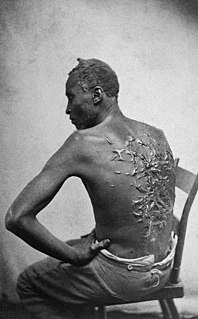 W
WThe treatment of enslaved people in the United States varied by time and place, but was generally brutal, especially on plantations. Whipping and rape were routine, but usually not in front of white outsiders, or even the plantation owner's family. An enslaved person could not be a witness against a white; enslaved people were sometimes required to whip other enslaved people, even family members. There were also businesses to which a slave owner could turn over the whipping. Families were often split up by the sale of one or more members, usually never to see or hear of each other again. There were some relatively enlightened slave owners—Nat Turner said his master was kind—but not on large plantations. Only a small minority of enslaved people received anything resembling decent treatment; one contemporary estimate was 10%, not without noting that the ones well treated desired freedom just as much as those poorly treated. Good treatment could vanish upon death of an owner. As put by William T. Allan, a slaveowner's abolitionist son who could not safely return to Alabama, "cruelty was the rule, and kindness the exception".
 W
WWanderer was the penultimate documented ship to bring an illegal cargo of people from Africa to the United States, landing at Jekyll Island, Georgia on November 28, 1858. It was the last to carry a large cargo, arriving with some 400 people. Clotilda, which transported 110 people from Dahomey in 1860, is the last known ship to bring enslaved people from Africa to the US.
 W
WWife selling is the practice of a husband selling his wife and may include the sale of a female by a party outside a marriage. Wife selling has had numerous purposes throughout the practice's history; and the term "wife sale" is not defined in all sources relating to the topic.